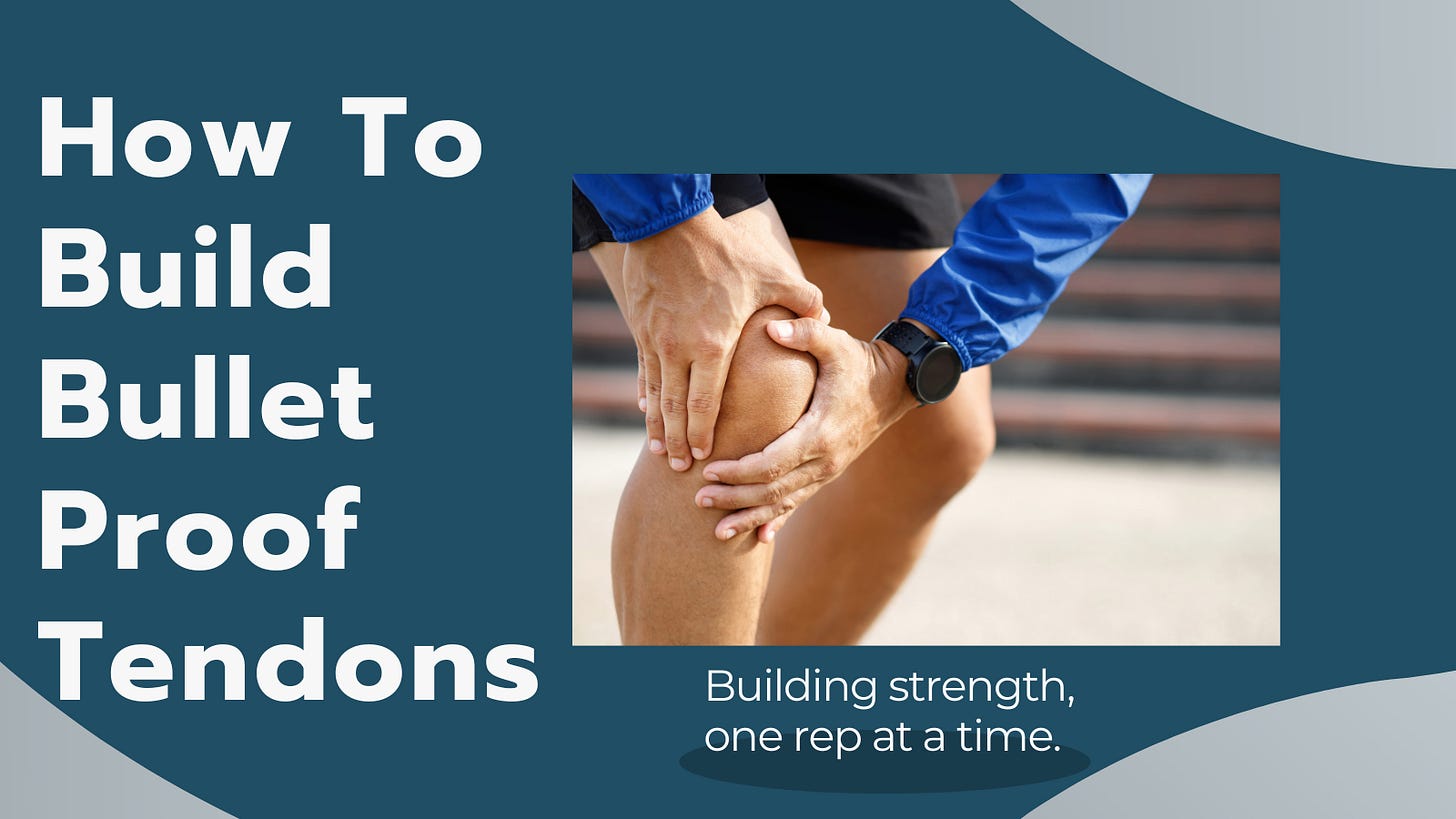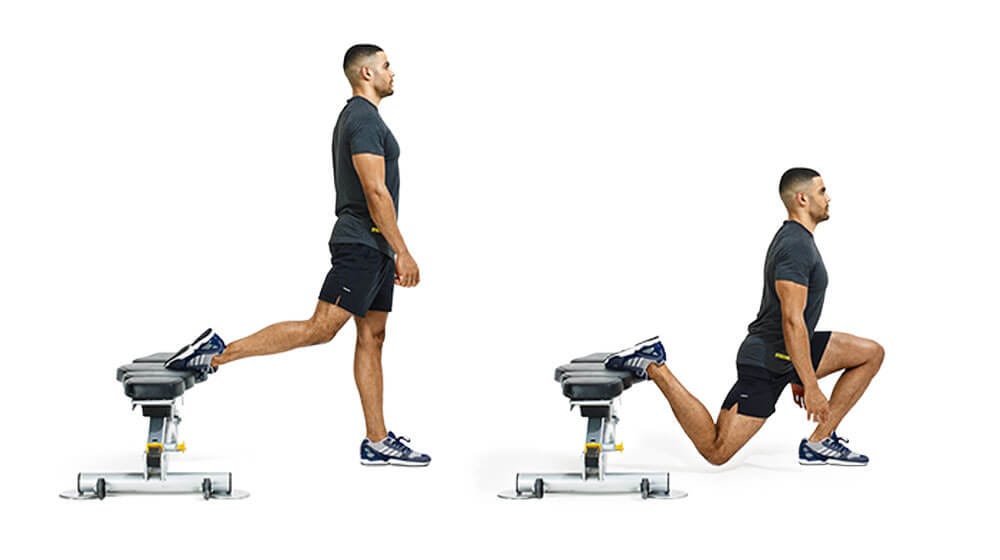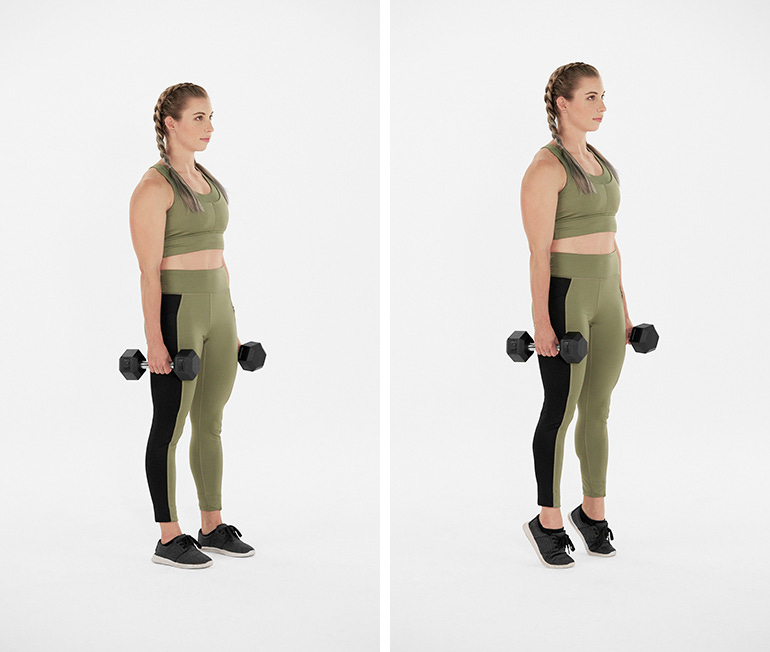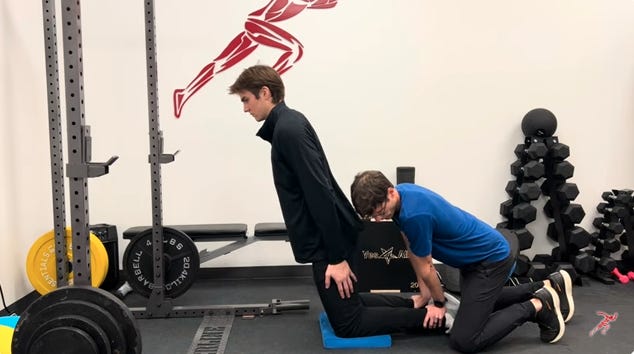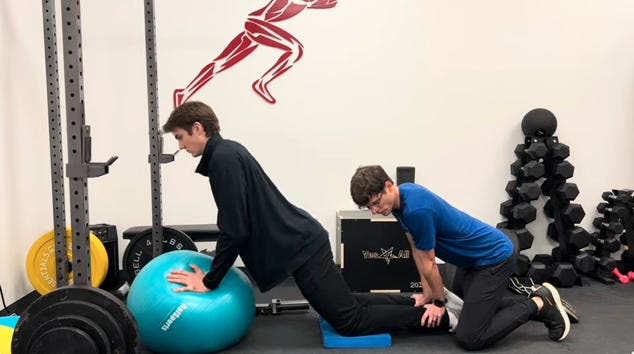How to Build Bullet-Proof Tendons!
Or at least get pretty darn close!
How to Build Bullet-Proof Tendons: A Comprehensive Guide to Strength and Recovery
Tendons play a critical role in athletic performance, connecting muscles to bones and transmitting force during movement. However, the rise in sports participation and competitive intensity has increased the prevalence of tendon injuries, such as hamstring and Achilles strains, which can diminish key physical attributes like strength, power, and stiffness. Fortunately, tendons possess a remarkable capacity to heal and strengthen with the right approach. This article outlines evidence-based strategies to build resilient tendons, focusing on training principles, exercise types, recovery protocols, and supplementation.
Tendon Healing and Adaptation
Tendons can recover from damage and become stronger over time with proper training. Research highlights this adaptability: an NBA athlete’s patellar tendon thickened and healed over 18 months, while an Olympian’s tendon remodeled in under two months. These examples demonstrate that healing timelines vary but are achievable with targeted intervention. The key lies in stimulating collagen production and tendon remodeling without exacerbating damage.
Core Principles for Tendon Strength
Building tendon resilience hinges on three factors: time, tension, and volume.
Time: Sustained stress is essential for tendon remodeling. Holding isometric contractions for 30 seconds triggers a stress-relaxation effect, allowing the tendon to lengthen and adapt.
Tension: The load must challenge the tendon effectively. Studies suggest 70% of maximum voluntary contraction (MVC) is ideal—think 40–50 lb dumbbells for split squats or over 200 lbs for calf raises.
Volume: Perform 3–6 sets of 30-second holds per session. For persistent injuries, include 2–3 different exercises targeting the affected tendon.
Effective Exercise Strategies
Not all exercises are equal when it comes to tendon health. Fast, dynamic movements like jumping or sprinting can irritate damaged tendons and hinder recovery. Instead, focus on these proven methods:
Isometric Training: Static contractions—such as holding a split squat, leg press, or calf raise—promote tendon healing by shortening the muscle while lengthening the tendon. Research from the University of Tokyo shows isometric training outperforms heavy resistance and plyometrics in boosting tendon stiffness, a critical factor in injury prevention and force development. For optimal results, adopt joint angles that induce long muscle length (e.g., a 90° knee angle for patellar tendon work) and sustain contractions for 10–30 seconds.
Slow Loading Exercises: Controlled, heavy movements through a full range of motion—like split squats or calf raises—complement isometrics by maintaining tension throughout the movement, further enhancing tendon strength.
Eccentric Training: As rehabilitation progresses, eccentric exercises (lengthening under load) can increase muscle fascicle length and active stiffness, reducing injury risk. Start with 4 sets of 6–12 reps at a tolerable load, progressing as pain allows, and assist the concentric phase if needed.
Plyometric Training: In later stages, plyometrics (rapid stretch-shortening cycles) prepare athletes for return-to-sport demands. Begin with low-intensity bilateral exercises (e.g., pogo hops) on soft surfaces, progressing to higher-intensity unilateral movements (e.g., bounding) with 80–140 contacts per session.
Tailoring to Specific Tendons
These principles apply universally across the body. For bicep tendon issues, try isometric bench presses or front raises. For Achilles injuries, use weighted isometric calf raises. Hamstrings, fingers, and elbows can also benefit from targeted isometric holds.
Recovery and Frequency
Training frequency should balance stimulus and recovery. Aim for 3–6 sessions per week, with 48 hours between workouts, as collagen synthesis peaks around 36 hours post-exercise. Keep pain below 4/10 during sessions, ensuring it returns to baseline within 24 hours.
Enhancing Results with Supplementation
Collagen supplementation can amplify tendon gains. Consuming 15g of gelatin with 225 mg of vitamin C 30–60 minutes before training supports collagen synthesis, according to research.
Benefits Beyond Strength
Isometric training offers additional advantages:
Pain Management: Five 45-second knee extension holds at 70% MVC can reduce patellar pain for up to 45 minutes, aiding adherence during early recovery.
Reduced Soreness: Preceding eccentric work with isometrics minimizes delayed onset muscle soreness (DOMS).
Joint-Specific Strength: High-intensity contractions (>80% MVC) for 3–10 seconds boost maximal strength, while short ballistic holds (1–3 seconds) enhance rate of force development.
Sample Exercises:
Split Squat:
Leg Press:
Calf Raise:
Isometric Bench Press:
Isometric Front Raises:
Isometric Calf Raise:
Long Lever Bridge Holds (Start with two legs, progress to one):
Isometric Hamstring Curl (go easy on first few reps, hold for 10s at first and progress up to 30):
Add a physioball to go deeper (try not to carry all your weight with your arms):
Conclusion
Building bullet-proof tendons requires consistency, precision, and patience. By leveraging isometric, slow loading, eccentric, and plyometric exercises—alongside proper time, tension, and volume—athletes can rehabilitate injuries, boost tendon stiffness, and return to peak performance safely. Pairing this with strategic recovery and collagen supplementation maximizes outcomes, ensuring tendons withstand the demands of high-level sport.
References
Effects of different duration isometric contractions on tendon ... The present study demonstrates a greater increase in stiffness of human tendon structures following isometric training using longer duration contractions ...
Effectiveness of isometric exercise in the management of tendinopathy - August 3, 2020 — Isometric exercise does not appear to be superior to isotonic exercise in the management of chronic tendinopathy.
3 - Tendinopathy Rehabilitation - Physiopedia - They used the squat, leg press and 'hack squat' and recommended 4 sets of each exercise with a 2-3 minute rest between sets, repeating 3 times per week. A third ...
4 - Tendinopathy Exercises - Physiopedia... Isometric exercises: Hold for 35-60 seconds. 1 set of 6-8 reps. Isotonic exercises: 8-12 reps. 2 sets with a 30-second rest between sets. Week 4-6 Increase ...


